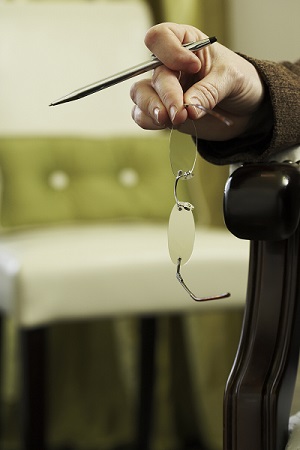
November is a pivotal month for aspiring novelists. Each year at this time a worldwide community of writers come together for a single purpose—they will write a novel in 30 days. The NanoWriMo: Write a Novel in 30 Days project was created by Bay Area freelance writer Chris Baty in 1999 with a mere 21 participants, the following year 5,000 writers enrolled and the numbers have risen exponentially ever since.
NanoWriMo does not officially launch until November however CE’s class, NanoWriMo: Write a Novel in 30 Days instructor Leslie Atkins-Hall spends the month prior exploring numerous ways to help her students prime their creative pumps. “This Nano class is a unique one,” she says. “I want writers to know about Nano as a way of getting some words down and joining a huge community of writers all writing at the same time. I also emphasize the way any writer can use Nano to jumpstart their project, finish a first draft, or just re-invigorate their writing.”

Five simple rules govern the NanoWriMo process:
1. Writing starts at 12:00: a.m. on November 1 and ends 11:59:59 p.m. on November 30, local time.
2. No one is allowed to start early and must finish 30 days from that start point.
3. Novels must reach a minimum of 50,000 words before the end of November. These words can either be a complete novel of 50,000 words or the first 50,000 words of a novel to be completed later.
4. Planning and extensive notes are permitted, but no material written before the November 1 start date can go into the body of the novel.
5. Participants' novels can be on any theme, genre of fiction, and language. Everything from fanfiction, which uses trademarked characters, to novels in poem format, and metafiction is allowed; according to the website's FAQ, "If you believe you're writing a novel, we believe you're writing a novel too."
After teaching her NanoWriMo class for nearly 6 years, Adkins-Hall looks forward to seeing familiar faces each quarter. “I get lots of returning students from Nano and other classes,” she says. “This class is a good forum for all types and levels of writers. It is fiction-focused but also great for memoir and other long-form writers.“
So what have past NanoWriMo students taken away from the Adkins-Hall’s class and what brings them back? Student Vickie Ropp says she was grateful for much of what she learned in class but the infectious enthusiasm of her instructor and fellow students left the greatest impact. “Each evening I left feeling excited and motivated to keep writing my mystery novel. This helped me develop a morning writing routine, which I've continued since the class. I've completed my draft and one round of revising, using the handouts and books Leslie suggested. Her enthusiasm was contagious. I highly recommend her to any new (or experienced) writer.”
Ropp’s classmate Emily Swain echoes this sentiment, saying “While I did not complete my novel, I made significant progress by consistently writing and setting up tools for success for a writing commitment. My novel eventually changed to other stories but the course got me to commit to an idea and write without self-consciousness and doubt!”
“Long-form fiction is a long-term project,” says Adkins-Hall. “Nano is a month-long project os after the class is over I don’t always hear back from students. However I encourage everyone to sign up on the Nano website for their motivational emails but I also forward some to former students during Nano. They all leave class with my email and I am happy to chat with folks during the Nano month. Every class I teach I emphasize the need for a writing community—take another class, go to a writers conference, join a writers group—something to keep inspired and know that others share your challenges.”
However Swain says it was peer pressure (of the best possible kind) that propelled her creative efforts. “We all made a pact to finish and reach a goal of words drafted that held us all accountable,” she says. “I also shared with friends, family, and coworkers my goals which helped me stay on task.”
Ropp and Swain both agree CE’s NanoWriMo class helped strengthen their skills as writers. “Some tools I consistently use since taking the Nano class are to set  aside time daily for writing, even if just for a quick 10 minutes to get my ideas down on paper,” says Swain. “Other tools I use are minor writing prompts and dialogue exercises (dialogue is my most challenging part of writing a novel).”
aside time daily for writing, even if just for a quick 10 minutes to get my ideas down on paper,” says Swain. “Other tools I use are minor writing prompts and dialogue exercises (dialogue is my most challenging part of writing a novel).”
Swain says she will not be returning to Adkins-Hall’s class in the fall—she’s ready to take her writing to the next level. “I will be in a different course this fall going on at the same time: Writing Your 1st Book (taught by Rebecca Morris), so I unfortunately will not be attending Nano at the same time. However, I feel much more prepared for the first book course because of taking Nano last year. It was my favorite day of the week knowing I was going to get to write Tuesday nights! I had so much fun and feel much less overwhelmed at drafting a novel now.”
For Adkins-Hall, the winter months of October and November are dark months that glow with creativity and inspiration. “I LOVE inspiring new writers,” she says, “They come to the first class a little terrified that they are embarking on this journey of writing. By the end of class they are excited! We can do anything for 30 days—30 dark days in November! I want writers to come away feeling ready to jump in and try massive first drafting in November.”
Learn more about NanoWriMo: Write a Novel in 30 Days.